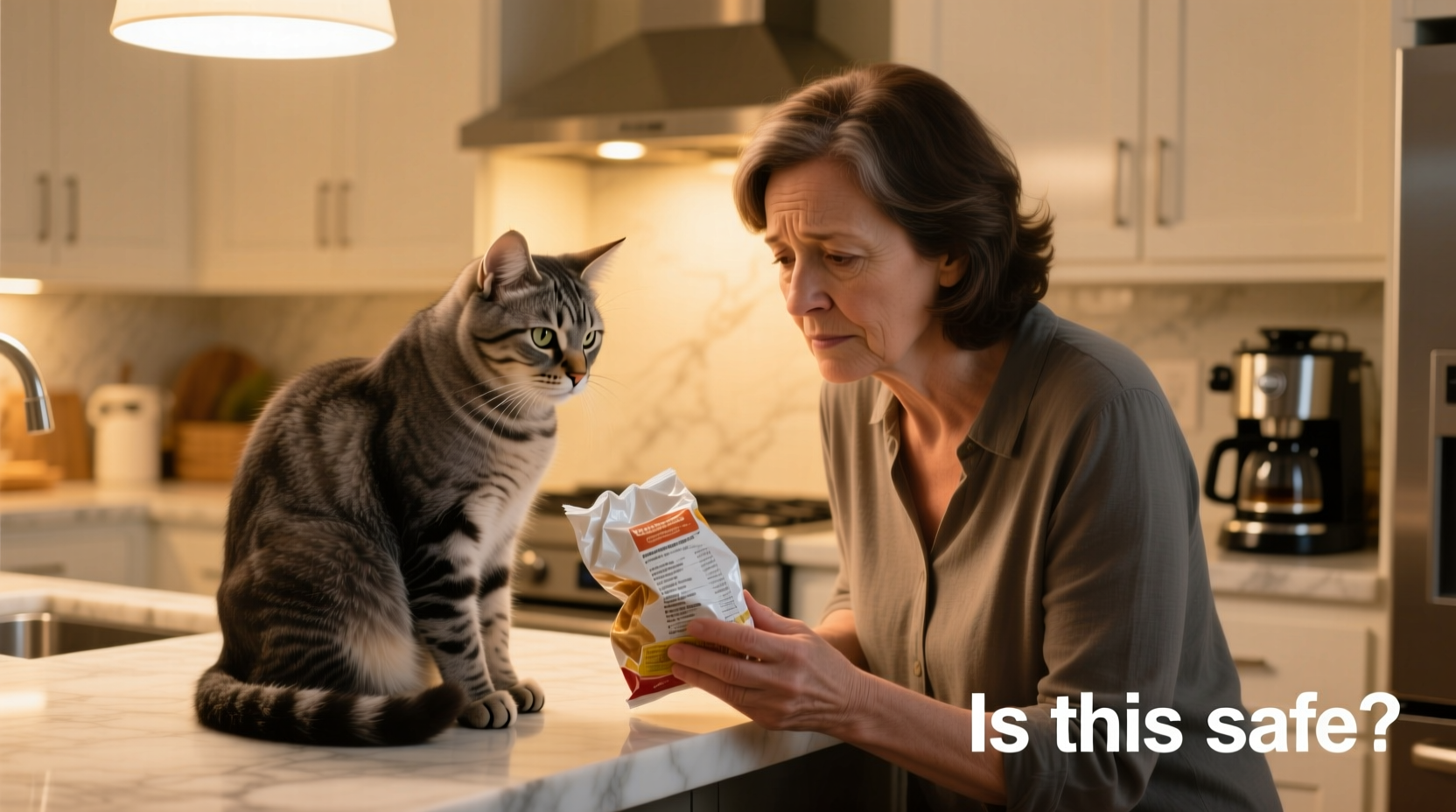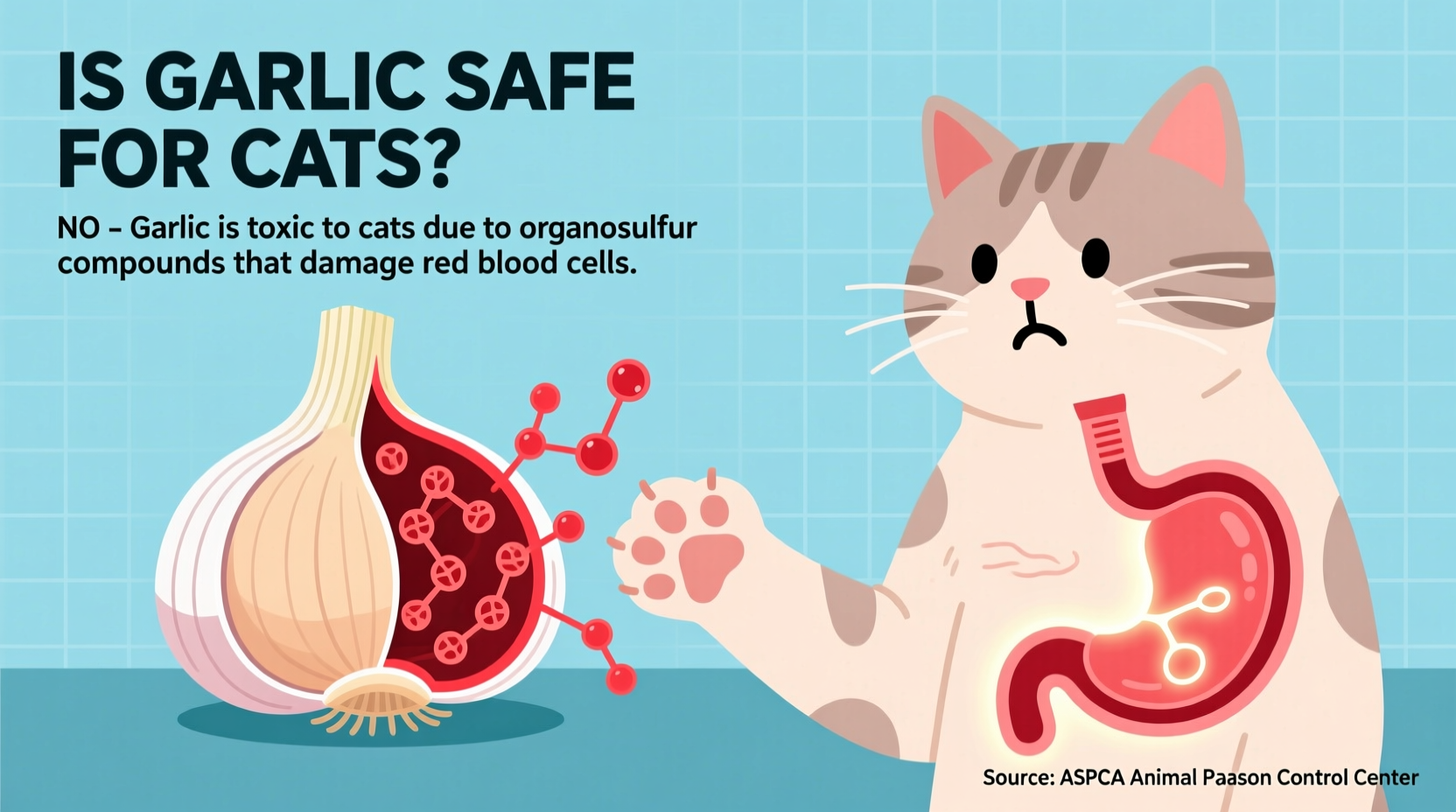No, garlic is absolutely not safe for cats. Even small amounts can cause severe anemia and organ damage. This article explains exactly why garlic is toxic to cats, the dangerous symptoms to watch for, and immediate steps to take if your cat has been exposed.
As a pet owner, discovering your cat might have eaten something dangerous triggers immediate panic. Garlic toxicity in cats isn't just a minor concern—it's a potentially life-threatening emergency that requires swift action. Unlike humans who can enjoy garlic's health benefits, cats lack the necessary enzymes to process compounds in garlic, leading to red blood cell destruction. Understanding the precise risks and response protocols could save your feline companion's life.
Why Garlic Poses a Critical Threat to Cats
Garlic belongs to the Allium family, which includes onions, leeks, and chives—all toxic to cats. The dangerous component is N-propyl disulfide, which causes oxidative damage to red blood cells. Cats lack sufficient levels of the enzyme glucuronyl transferase needed to metabolize these compounds safely.
When red blood cells become damaged, they form Heinz bodies—abnormal structures that make cells fragile and prone to rupture. This process, called hemolysis, leads to hemolytic anemia, reducing oxygen delivery throughout the body. Unlike dogs who might tolerate tiny amounts, cats are exceptionally vulnerable due to their unique physiology.
| Allium Type | Toxic Compound | Minimum Dangerous Dose for Cats | Onset of Symptoms |
|---|---|---|---|
| Garlic (fresh) | N-propyl disulfide | 15-30g per kg of body weight | 24-48 hours |
| Garlic powder | Concentrated disulfides | 5g per kg of body weight | 12-24 hours |
| Onion | Thiosulphate | 5g per kg of body weight | 24-72 hours |
| Chives | Disulfides | 2.5g per kg of body weight | 12-48 hours |
Source: American Society for the Prevention of Cruelty to Animals (ASPCA) Animal Poison Control Center
Symptom Timeline: What Happens After Garlic Exposure
Garlic toxicity follows a predictable progression that pet owners must recognize:
- 0-12 hours: Initial gastrointestinal distress (vomiting, diarrhea, abdominal pain)
- 24-48 hours: Development of hemolytic anemia symptoms (pale gums, weakness, rapid breathing)
- 72+ hours: Severe cases show jaundice (yellowing of skin/mucous membranes), dark urine, and potential organ failure
The delayed onset creates dangerous complacency—many owners don't connect symptoms to earlier garlic exposure. Cornell University's College of Veterinary Medicine emphasizes that even small repeated exposures can accumulate to toxic levels.
Immediate Action Protocol: If Your Cat Ate Garlic
Time is critical when addressing garlic exposure. Follow this vet-recommended sequence:
- Assess exposure: Determine approximate amount and form (fresh, powder, cooked)
- Contact emergency vet immediately: Don't wait for symptoms—call while gathering information
- Provide critical details: Your cat's weight, time of exposure, estimated quantity consumed
- Follow vet instructions: They may recommend inducing vomiting (only with professional guidance)
- Transport safely: Keep your cat calm and warm during transit to the clinic
Never attempt home remedies like milk or oil—these can worsen complications. The Veterinary Information Network confirms that professional intervention significantly improves outcomes, especially when initiated before symptom onset.

Preventing Garlic Exposure: Practical Household Strategies
Many garlic exposures occur through seemingly harmless situations:
- Human food dangers: Leftover pizza, garlic bread, or seasoned meats left unattended
- "Natural" flea remedies: Homemade garlic-based sprays (completely ineffective and dangerous)
- Medicinal misconceptions: Well-meaning owners using garlic for purported health benefits
- Accidental ingestion: Garlic powder spills or open supplements
The ASPCA Animal Poison Control Center reports a 300% increase in garlic toxicity cases during holiday seasons when table scraps become more common. Store all garlic products in cat-proof containers and never intentionally feed garlic to your cat—even in "small amounts."
Safe Alternatives for Common Concerns
Many garlic exposures stem from misguided attempts to address:
- Flea prevention: Use veterinarian-approved topical treatments instead of dangerous home remedies
- Dietary enhancement: Consult your vet about appropriate feline supplements
- Breath freshening: Specialized dental treats designed for cats
Research published in the Journal of Feline Medicine and Surgery confirms that no safe therapeutic dose of garlic exists for cats. Any perceived benefits are outweighed by significant health risks.
When to Seek Emergency Care: Clear Thresholds
Don't wait for multiple symptoms to appear. Contact your vet immediately if:
- Your cat consumed any garlic powder (more concentrated than fresh)
- Exposure exceeds 15g of fresh garlic per kg of body weight
- Vomiting or diarrhea occurs within 12 hours of potential exposure
- Your cat shows unusual lethargy after possible ingestion
Early intervention often prevents the need for blood transfusions, which become necessary in severe anemia cases. The critical window for effective treatment is within 4-6 hours of exposure.











 浙公网安备
33010002000092号
浙公网安备
33010002000092号 浙B2-20120091-4
浙B2-20120091-4